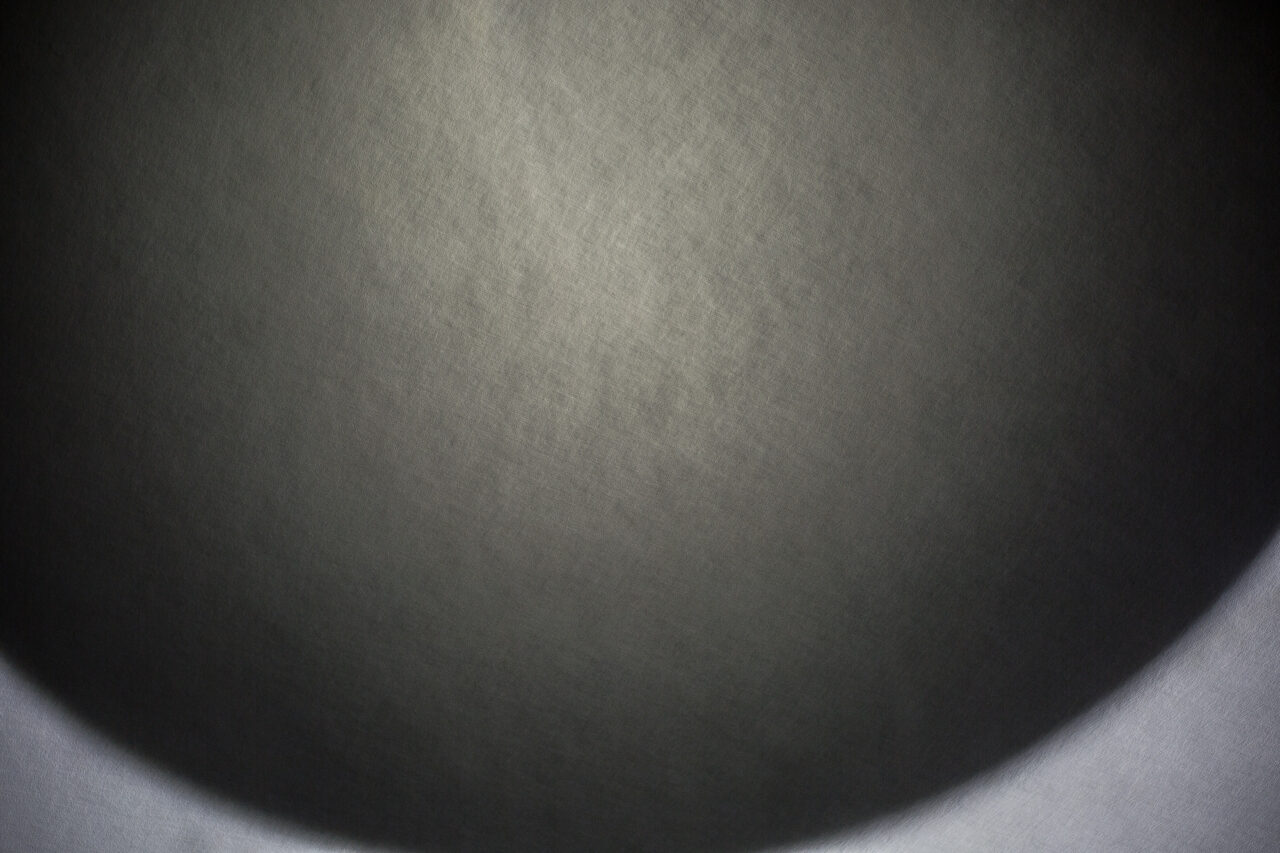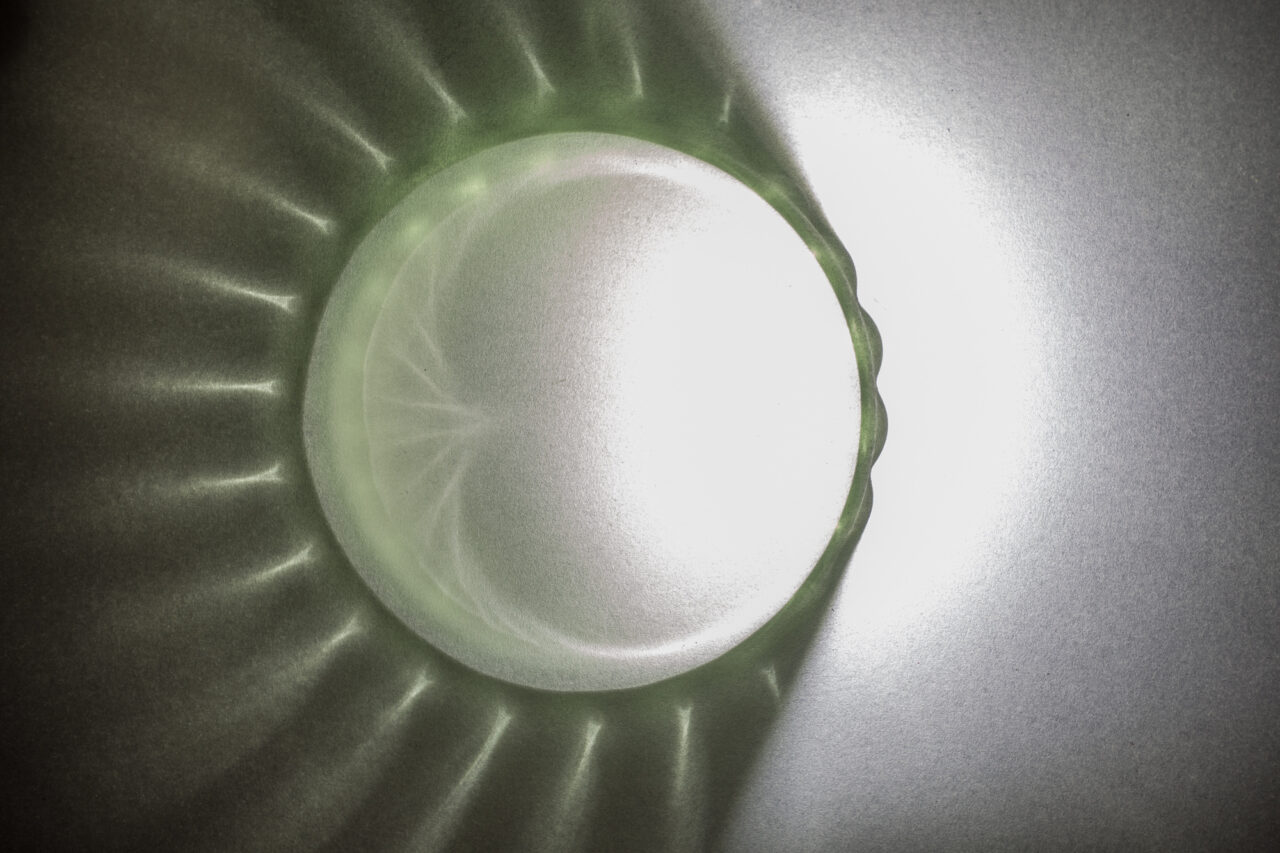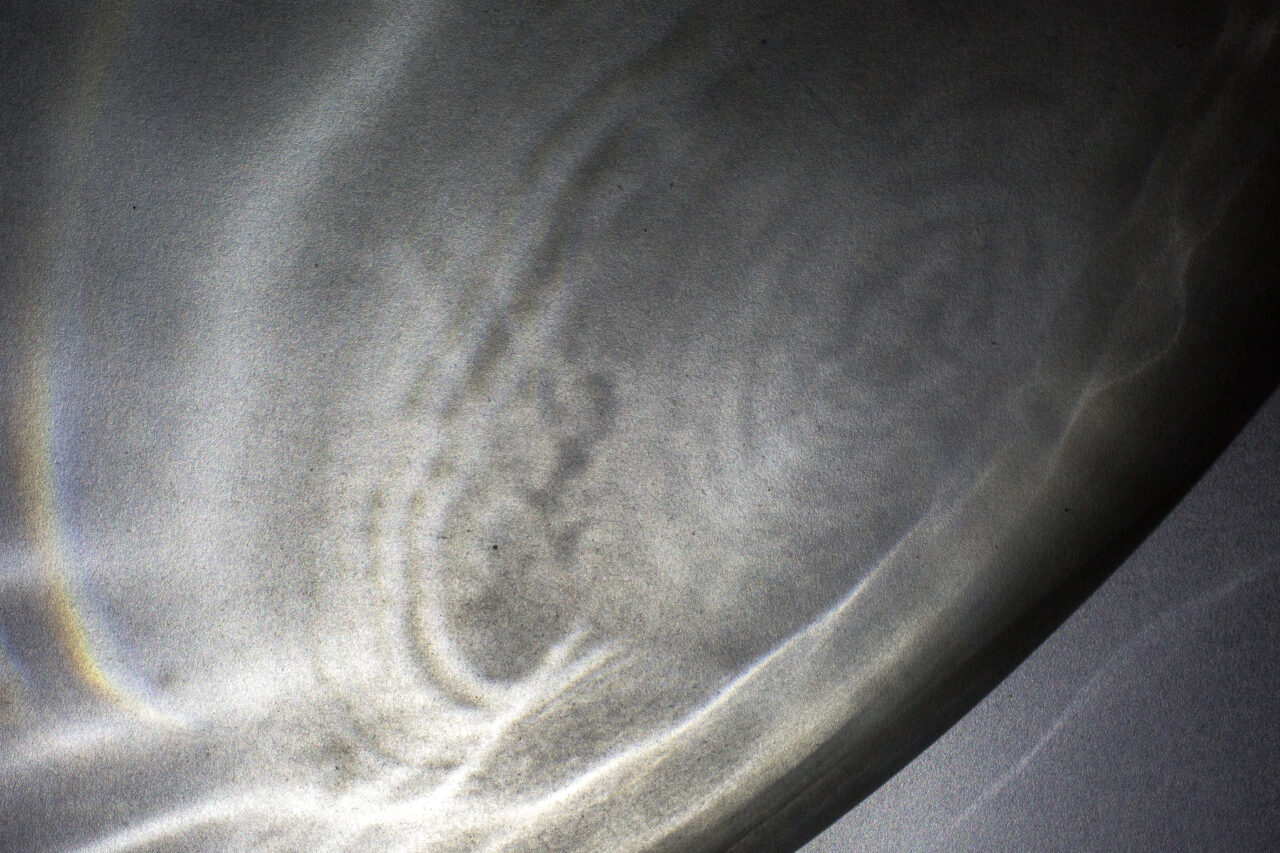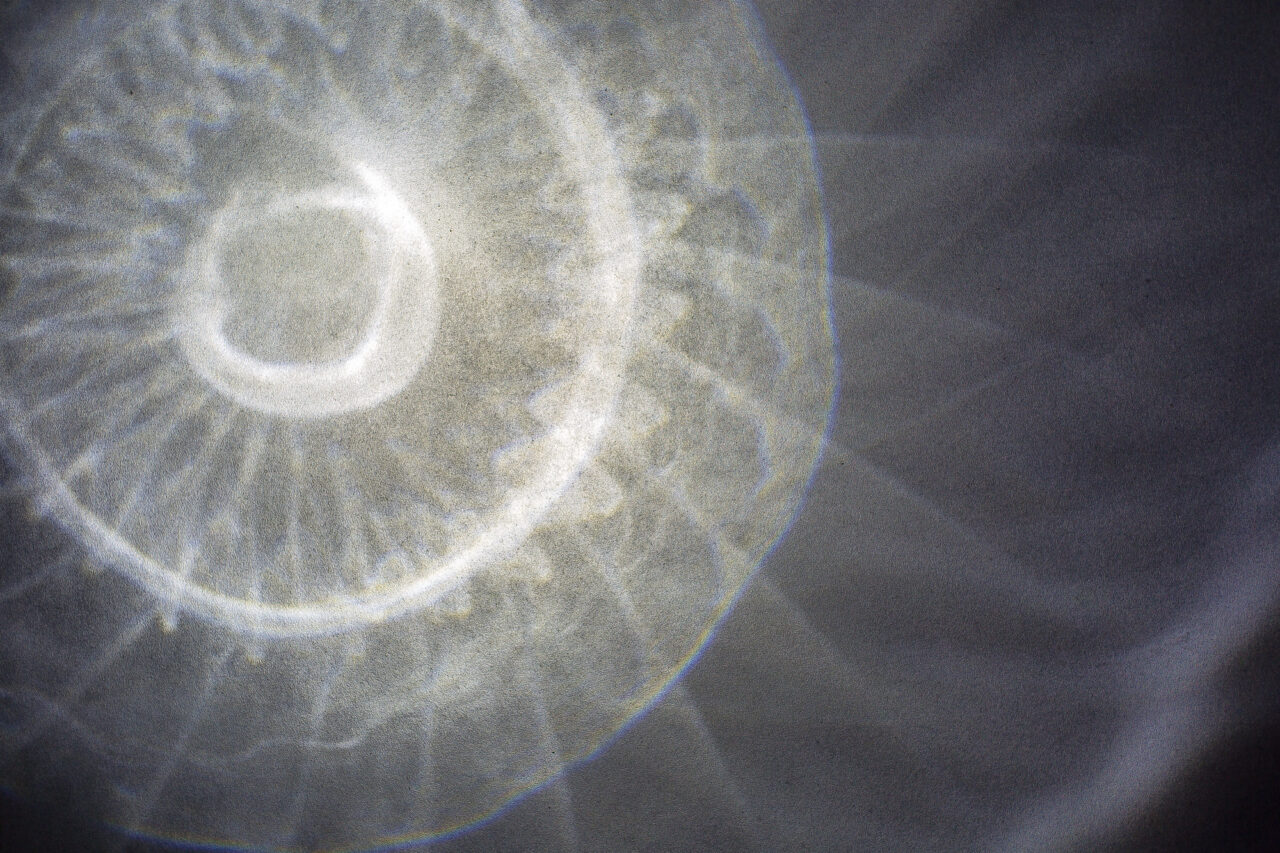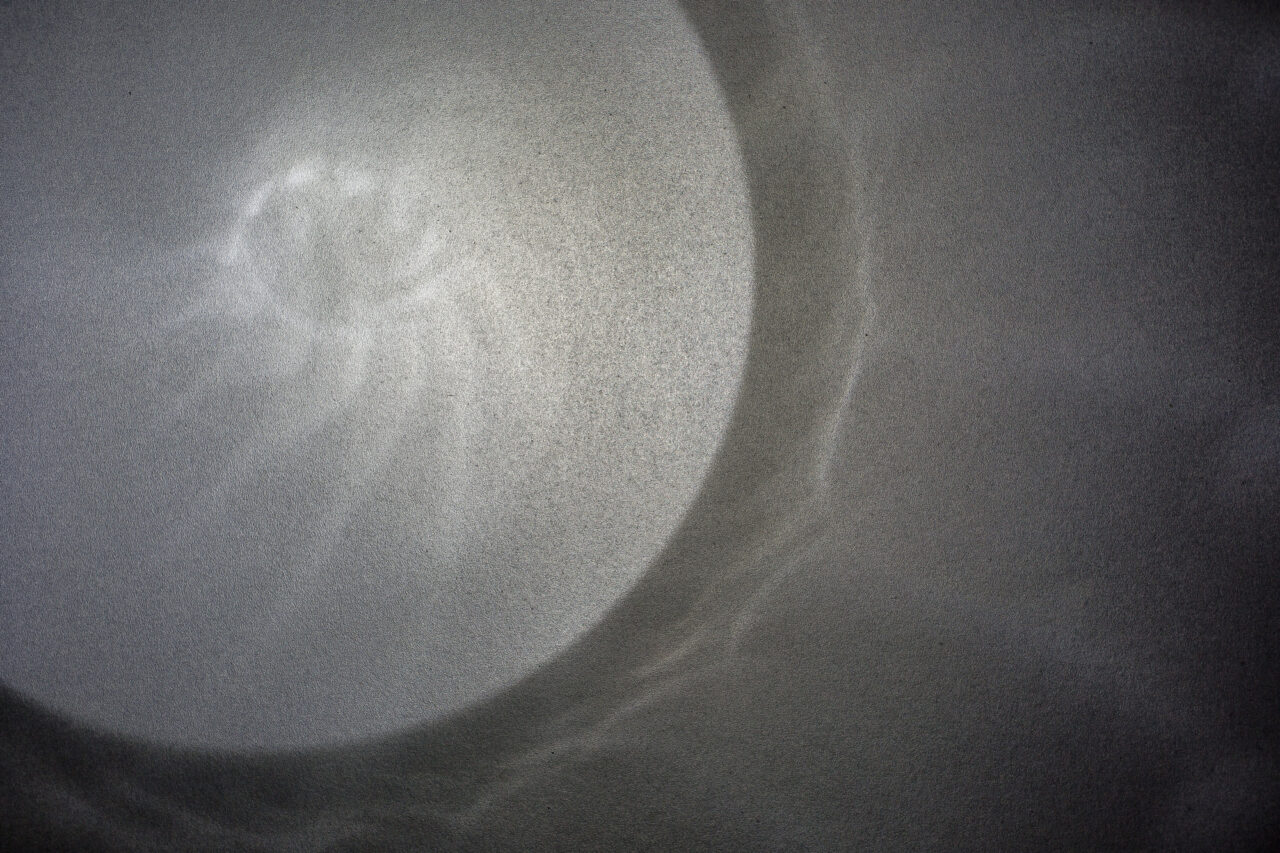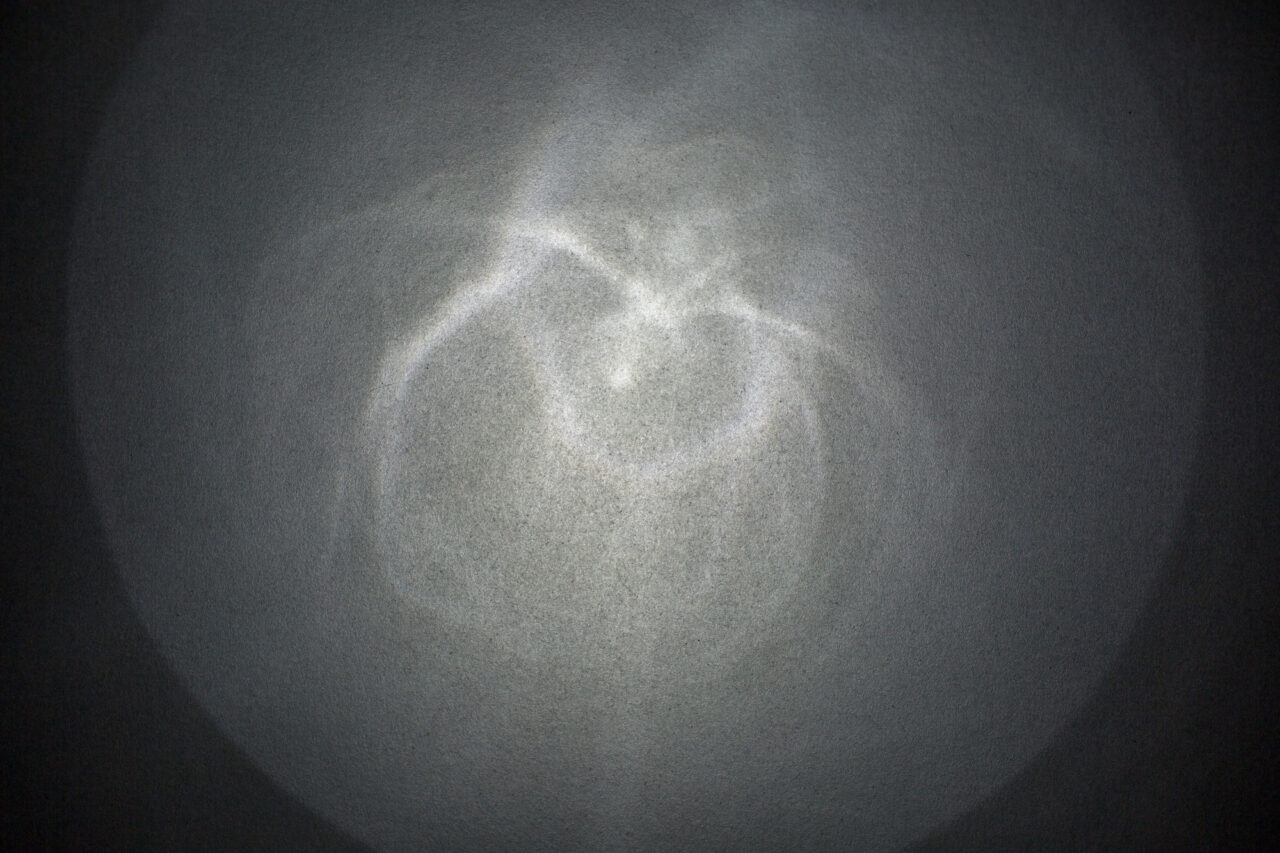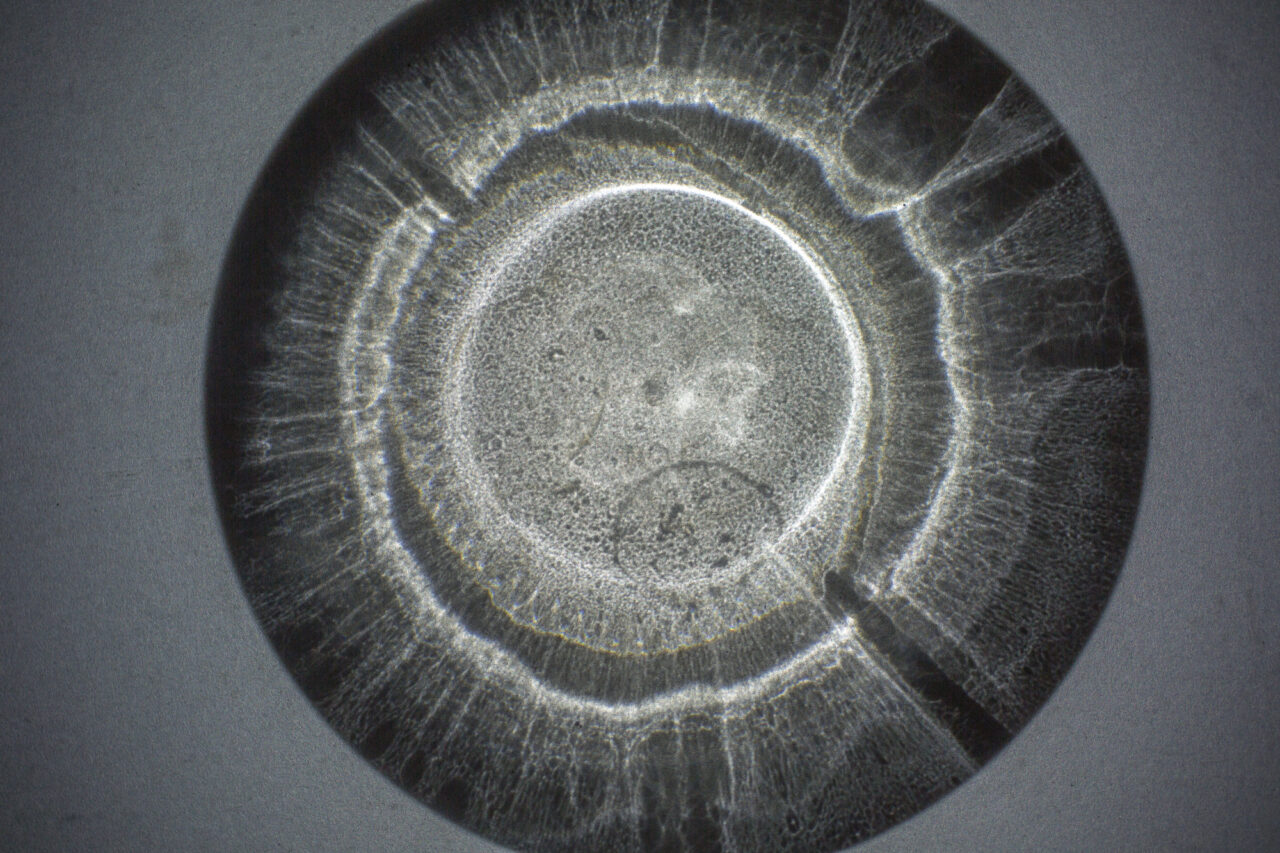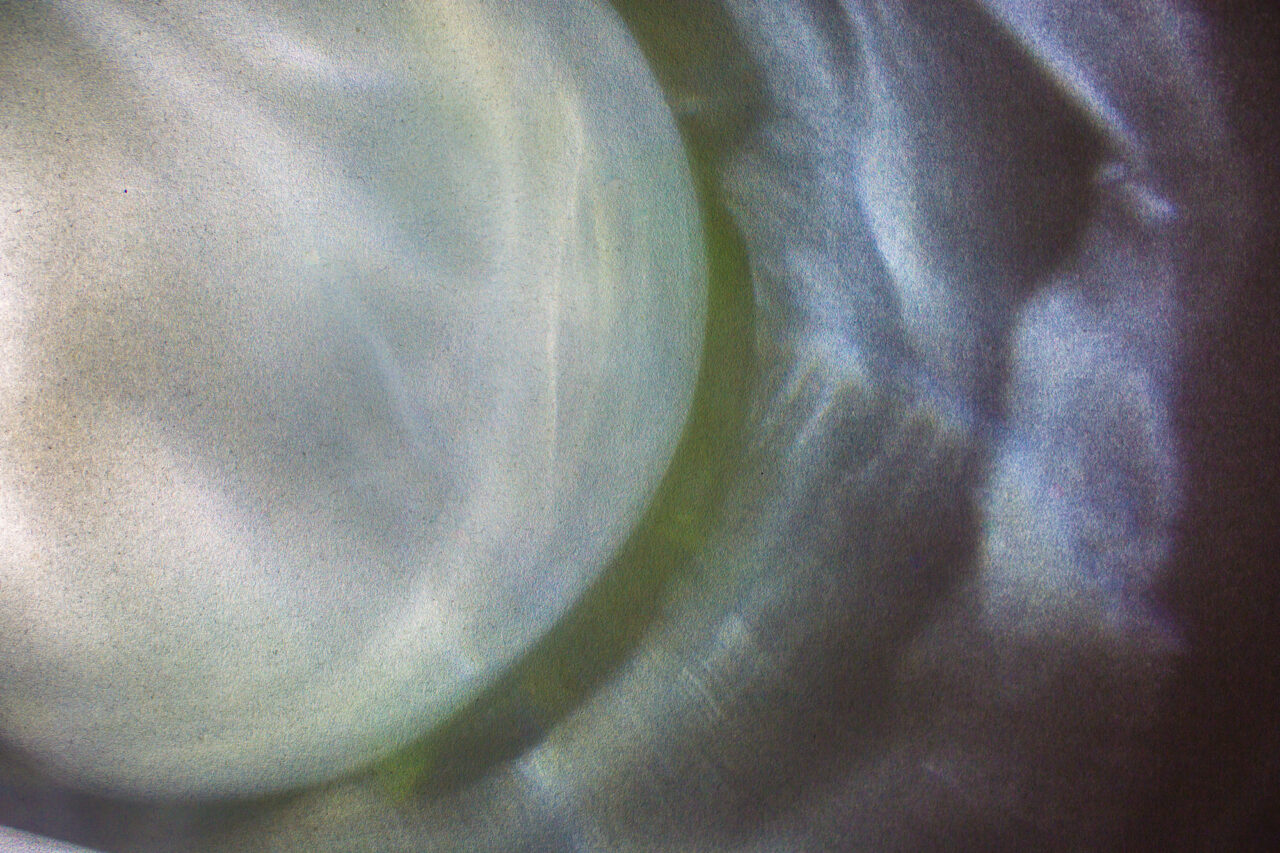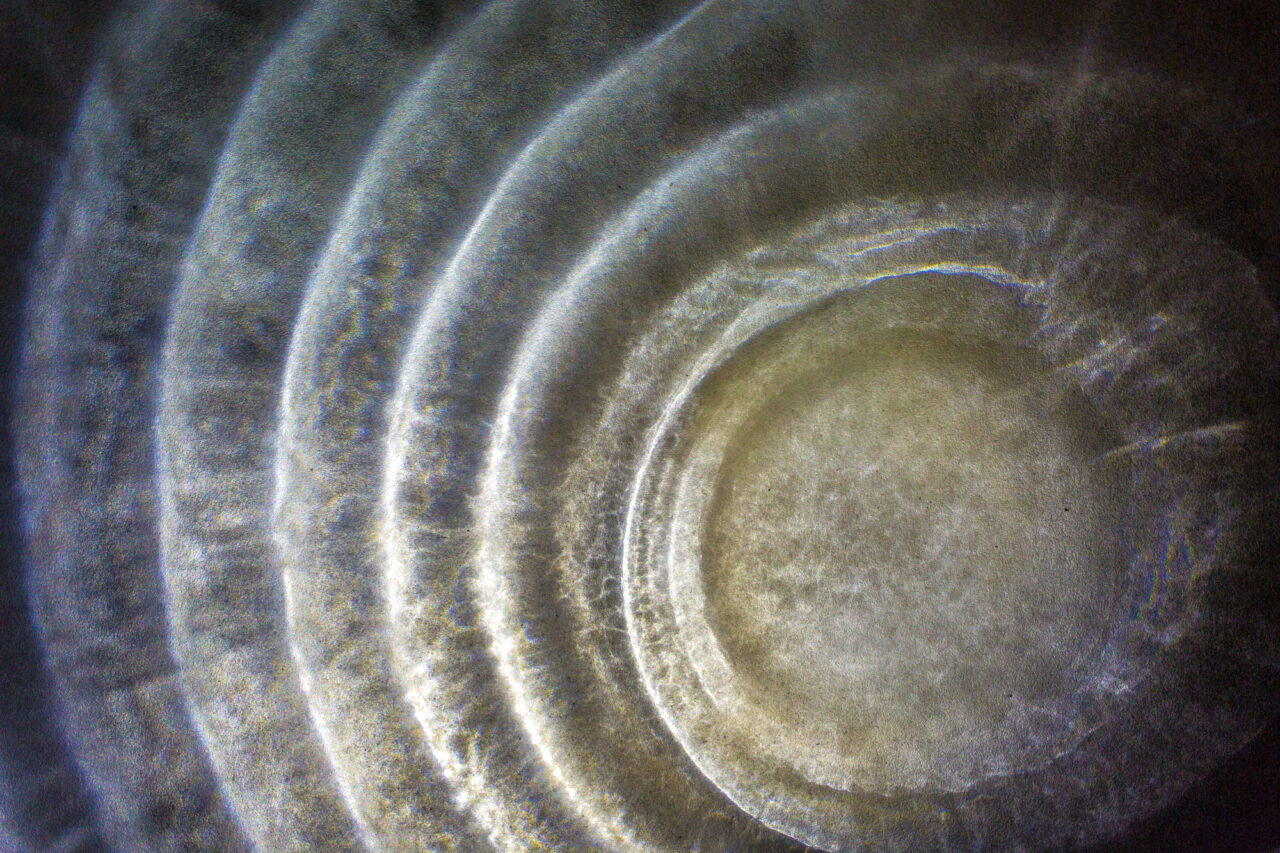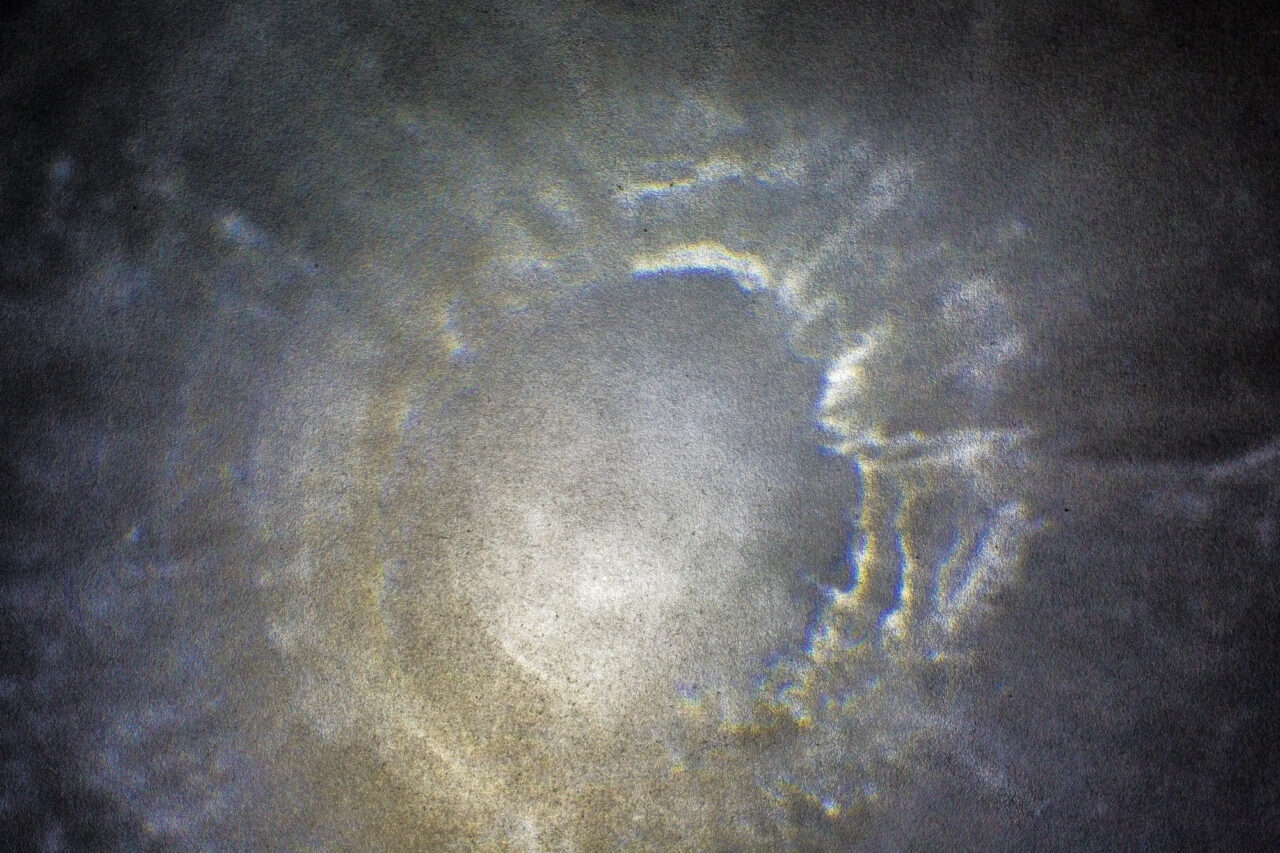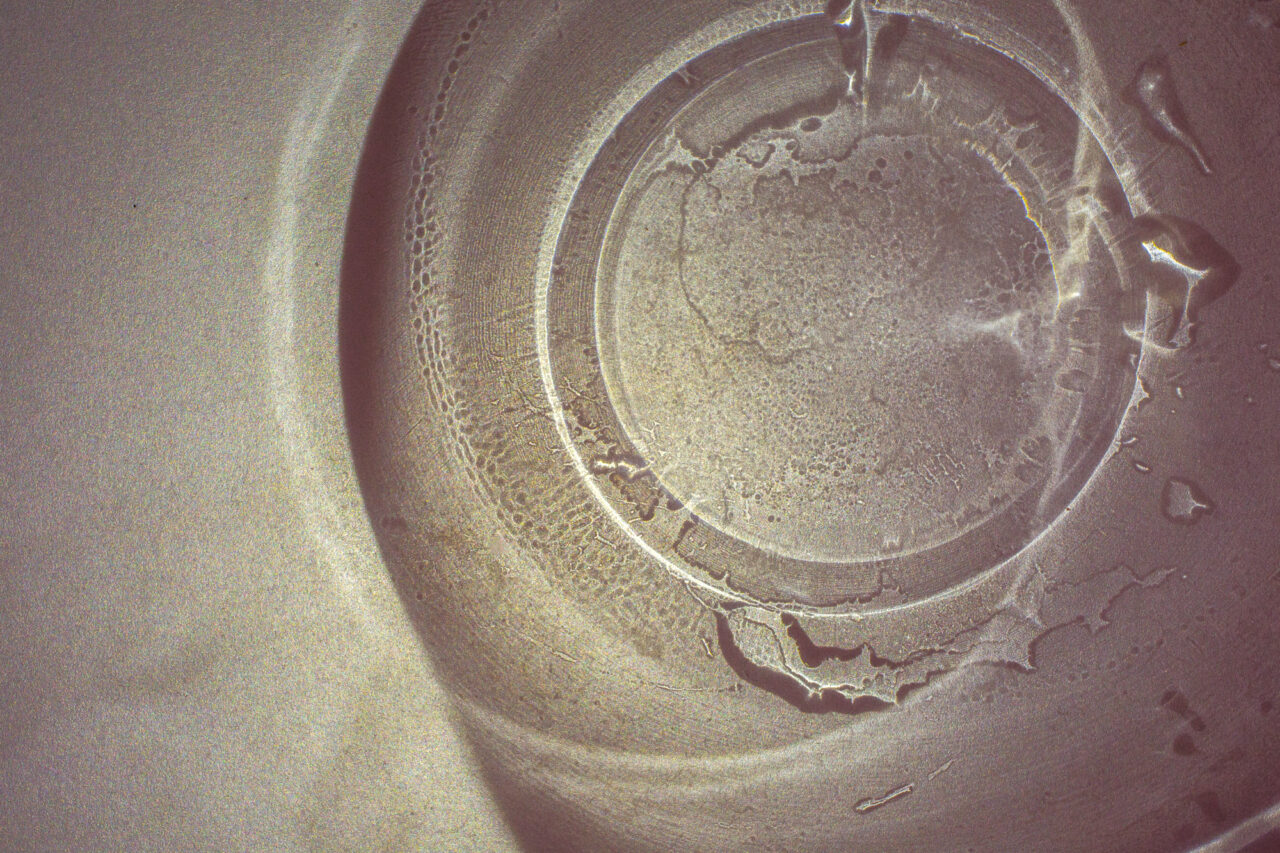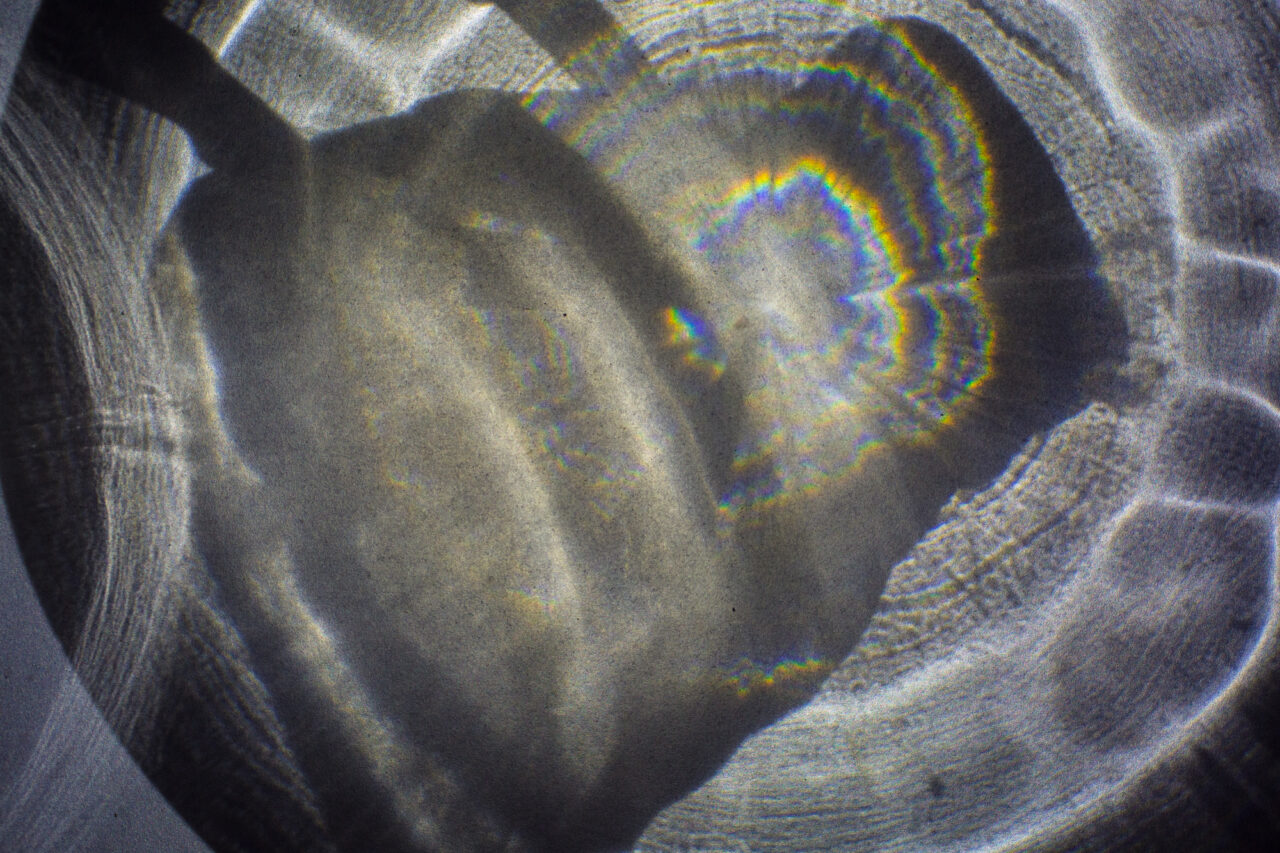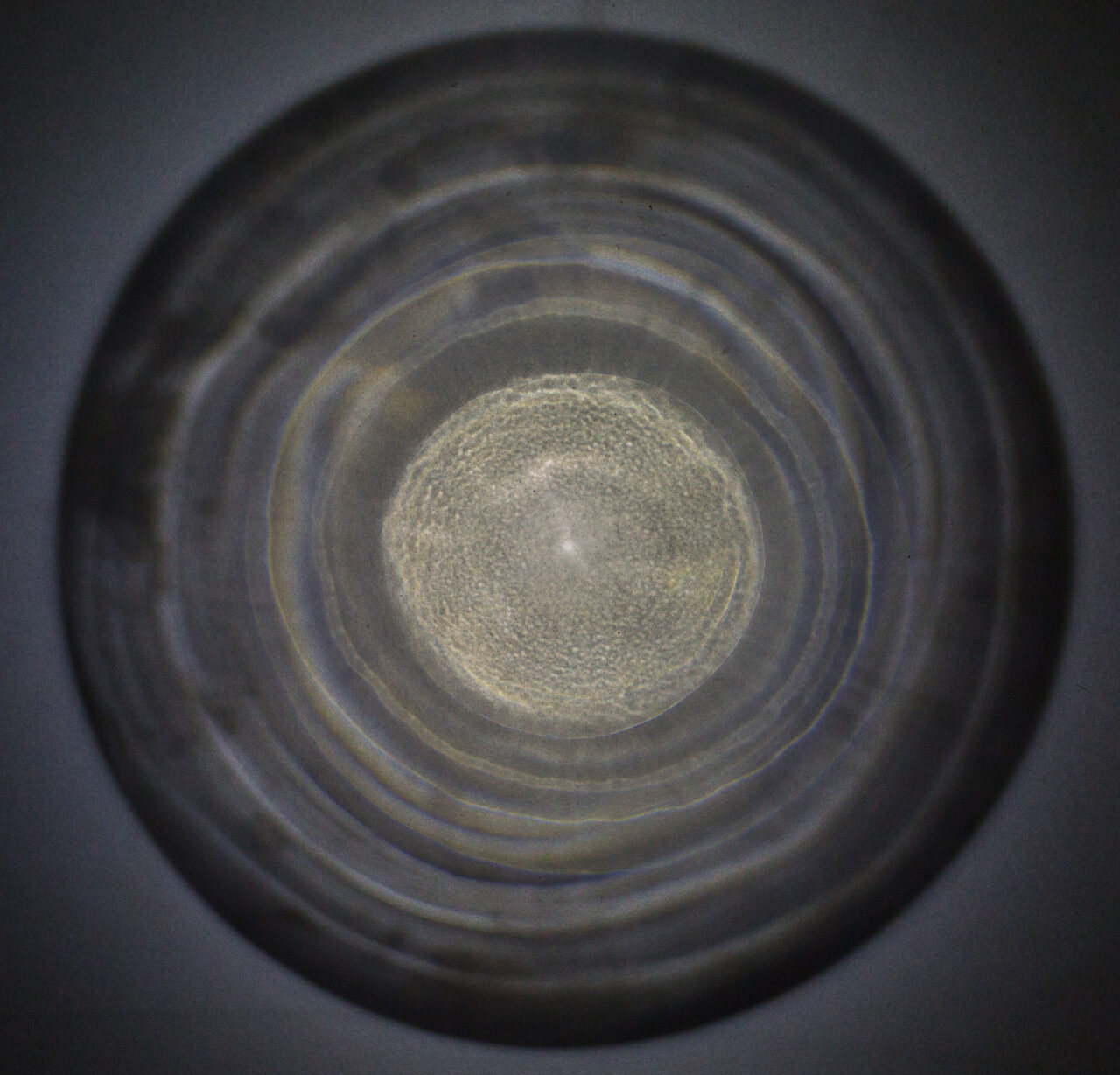Revelationes vitri (the revelations of glass)
An experimental photography project by Roberto Stephenson 2022
This photographic project explores the role of the lens and the refraction/projection phenomenon. The resulting images take us to the beginning of the universe linking physics, astronomy and the holy scriptures.
Using other transparent objects as lens, we discover the fascinating shadow effects of the light through the various thicknesses and defects of the glass when projected. The images made by simple glasses bottoms are full of unexpected poetry.
Exploring the intimate photographic process
While researching into experimental photography about the photographic process itself and how does the image of a scene form itself inside the camera, proceeding by trial and error I took a magnifying glass and placed it in front of the wall facing the window. I moved it forward and backwards so as to obtain the best focused image of the building in front. It was like me being inside the camera, watching its secrets from within and being able to witness how refraction bends light to recreate the image.
As expected, the image appeared clearly on the wall, upside-down and with the left side inverted with the right side. I then tried to obtain the image of the sun. Trying to focus to get a clear image of it I found out that by changing the focusing distance, instead of projecting the image of the sun, it was the sun which was projecting the image of the lens itself inside the camera.
I immediately felt like I was looking at something quite peculiar. Cameras are conceived to register the scene in front of them through the lens and not to show us the image of the lens itself. The lens is the element able to form the external image on the sensor plane which is then to be registered by the sensor itself.
While experimenting I discovered how each imperfection and inclusion, elements that normally lead us to consider a glass less valuable than another, on the contrary this time, in this investigation, are good reasons to choose a lens because they make it more interesting and unique.
Investigating further, a lens is nothing but curved glass; very perfectly curved and pure glass. So what if we change the lens with another piece of glass, not as perfect as a lens but more funky in the curves? What about the bottom of a drinking glass? It looks like a lens as it is curved and thick. Then the sun, which is nothing but a beam of light that I use to project the image of the bottom of the glass on the wall. The projected glass produces peculiar shadows made up of bright and dark parts, deformed thicknesses and inclusions resulting in unexpected images. The shape, color, thickness and imperfections of the glass originates unpredictable refractions which modulate themselves indefinitely according to the position.
Now the camera is turning onto itself showing us its very soul and is enabled to portrait itself from within.
A photograph that photographs itself from the interior, as in an introspective gaze, studies, analyzes the expression of its simplified optical component i.e. the drinking glass, revealing a hidden and wonderful soul.
Each glass has its own soul and that is not revealed at first sight. From its colors, often very subtle, its surface, its thickness, its material, a transparent object elevated as a lens is able to project a variety of shadow/light figures only apparently classifiable as abstract.
The product of these photos has nothing to do with glass and never could anyone think of glass looking at them. I see stars, asters and celestial bodies but at the same time I see atoms and cells, sometimes even mitosis. I see a magical universe, full of vibrations and harmonies,
The camera, through this inherent process, reveals the intimate essence of the glass bottoms and it shows that their souls are connected and in communion with the mysteries of the cosmos, from the infinitely small to the infinitely large, from its genesis to its apocalypse.
This mystical interpretation inspires me to name the photographs with quotes from the very mysterious and timeless books of the Bible, the first and the last, highly poetical and full of metaphors regarding light. The book of Genesis begins with the creation of the light, and then elements and celestial bodies. The book of Apocalypse is also metaphorically rich. Moreover, Apocalypse is a Greek word which means “revelation”, which recalls the revelation of the lens’ soul, by means of the light.
The work I am submitting is not just highly experimental in the approach (and where there is experimentation in my approach, there is also the pleasure of going back in time, getting rid of stress and obligations and being possessed by the boy I was) but also abstract and poetic in the final images.


